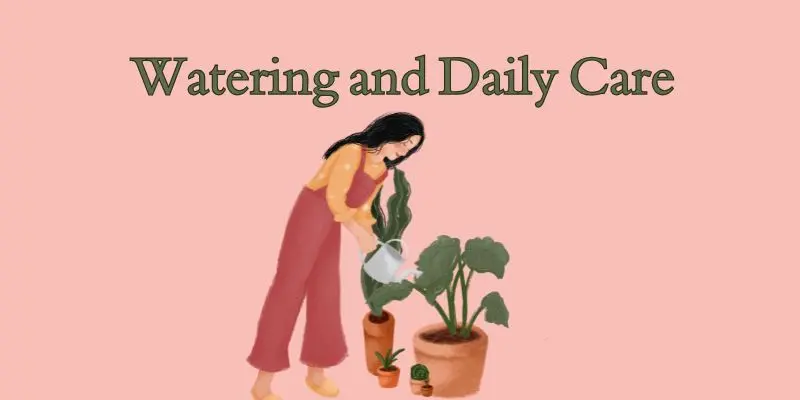How to Grow Turmeric and Ginger at Home: A Beginner’s Guide to Healing Roots
Published: 6 May 2025
Turmeric (Curcuma longa) and ginger (Zingiber officinale) are tropical root crops widely known for their medicinal, anti-inflammatory, and culinary benefits. Both belong to the Zingiberaceae family and grow from rhizomes rather than seeds. With the right conditions—warm temperatures, indirect sunlight, and nutrient-rich soil—they can be successfully grown at home in pots, raised beds, or garden plots. Learning to grow these healing roots not only ensures chemical-free harvests but also connects you to the ancient traditions of natural wellness.
So, guys, without wasting time, let’s jump into the article to learn How to Grow Turmeric and Ginger at Home: A Beginner’s Guide to Healing Roots
The Healing Roots in Your Hands
- Ginger and turmeric aren’t just spices—they’re ancient, healing roots tied to comfort, culture, and natural medicine.
- Imagine walking to your kitchen garden and harvesting fresh, golden turmeric or aromatic ginger with your own hands.
- Whether you live in an apartment or have a backyard, these powerful roots can thrive right at home—with care, patience, and purpose.
- Keywords: grow ginger at home, grow turmeric indoors, home gardening for health, medicinal plants homegrown.
2. Why Grow Ginger and Turmeric Together?
- Both are tropical, rhizome plants that thrive in similar conditions—warm, humid, and shaded environments.
- They offer powerful anti-inflammatory and immune-boosting properties.
- Growing your own means no pesticides, no preservatives—just pure healing from soil to soul.

3. Choosing the Right Roots to Plant
- Use fresh, plump rhizomes from an organic store or nursery.
- Look for visible “eyes” or small buds—these are where new shoots emerge.
- Avoid dried, shriveled, or chemically treated rhizomes.
- Keywords: turmeric root for planting, ginger rhizome planting, organic root gardening.
4. When and Where to Plant Them
- Best planting time: Early spring, after the last frost.
- Ideal location: Partial sun, warm and humid environment.
- Indoors: Near a sunny window or under grow lights.
- Outdoors: In raised beds or containers with good drainage.
5. Preparing the Perfect Soil
- Use loose, loamy, well-draining soil rich in compost or organic matter.
- Avoid soggy or clay-heavy soil—rhizomes will rot.
- Ideal pH: 6.0–6.8.
- Add organic compost for slow-release nutrients.
6. How to Plant Ginger and Turmeric
- Cut rhizomes into 2–3 inch pieces, each with at least one eye.
- Plant 1–2 inches deep with buds facing upward.
- Space 8–10 inches apart in beds or one rhizome per pot (12+ inches wide).
- Cover lightly with soil and water well.
7. Watering and Daily Care
- Keep soil consistently moist but never soggy.
- Mist regularly if humidity is low.
- Mulch with straw or dried leaves to retain moisture.
- Avoid direct midday sun; morning light is best.

8. Fertilizing for Healthy Growth
- Feed monthly with organic liquid fertilizer or compost tea.
- High potassium and phosphorus formulas promote strong root growth.
- Avoid chemical fertilizers that can burn delicate rhizomes.
- Keywords: fertilizer for ginger, turmeric plant nutrition, organic feed for roots.
9. How Long Until You Harvest
- Ginger: Ready in 8–10 months; can harvest small bits after 4–5 months.
- Turmeric: Ready in 9–10 months when leaves start to yellow and dry.
- Carefully dig up rhizomes—don’t pull!
10. Post-Harvest: Cleaning, Curing, and Storing
- Rinse rhizomes gently and allow to air dry in the shade.
- Cure for 1–2 weeks in a warm, dry place before storing.
- Store in cool, dry containers or freeze for long-term use.
- Keywords: store fresh ginger, curing turmeric at home, how to keep harvested roots fresh.
11. Bonus: How to Use Your Homegrown Ginger and Turmeric
- Brew into teas for digestion and immunity.
- Grate fresh into curries, smoothies, or soups.
- Make golden paste or tinctures for natural wellness.
- Share it—give healing from your garden to others.
References
This guide is based on research from agricultural extension programs and expert recommendations from horticulturists specializing in root crops.
Author Name.
Marlon Retana-Cordero
Effect of Container Volume and Planting Density on Ginger and Turmeric Growth and Yield
a

- Be Respectful
- Stay Relevant
- Stay Positive
- True Feedback
- Encourage Discussion
- Avoid Spamming
- No Fake News
- Don't Copy-Paste
- No Personal Attacks

- Be Respectful
- Stay Relevant
- Stay Positive
- True Feedback
- Encourage Discussion
- Avoid Spamming
- No Fake News
- Don't Copy-Paste
- No Personal Attacks





